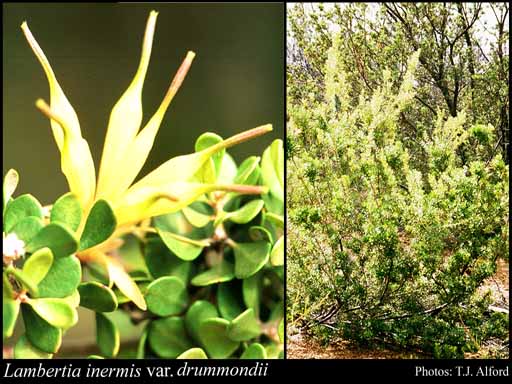- Reference
- Fl.Australia 16:500 (1995)
- Conservation Code
- Not threatened
- Naturalised Status
- Native to Western Australia
- Name Status
- Current
Erect, spreading, non-lignotuberous shrub or tree, to 4 m high. Fl. yellow, Sep to Dec or Jan to Feb. Brown sandy gravel, sandy clay loam, granite, laterite. Sandplains, foothills, shallow gullies, uplands, road verges.

Scientific Description
Shrubs; branchlets glabrous or hairy. Leaves whorled, 10-20 mm long, 3-7 mm wide, hairy; lamina flat, widest around the middle or clearly widest above the middle, entire, the margins flat; apex obtuse. Inflorescences yellow or red; innermost bracts 18-20 mm long. Perianth 40-48 mm long, glabrous; pistil 48-54 mm long, style glabrous. Flowers in January, February, September, October, November or December. Occurs in the South-west (SW) Botanical Province(s), in the Avon Wheatbelt (AW), Mallee (MAL) or Esperance Plains (ESP) IBRA subregion(s).
Distribution
- IBRA Regions
- Avon Wheatbelt, Esperance Plains, Jarrah Forest, Mallee.
- IBRA Subregions
- Fitzgerald, Katanning, Recherche, Southern Jarrah Forest, Western Mallee.
- IMCRA Regions
- WA South Coast.
- Local Government Areas (LGAs)
- Albany, Broomehill-Tambellup, Cranbrook, Dumbleyung, Esperance, Gnowangerup, Jerramungup, Kent, Plantagenet, Ravensthorpe, Wagin, Wickepin, Woodanilling.